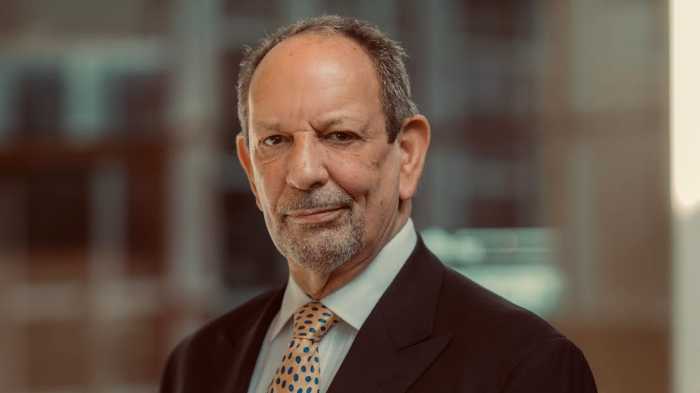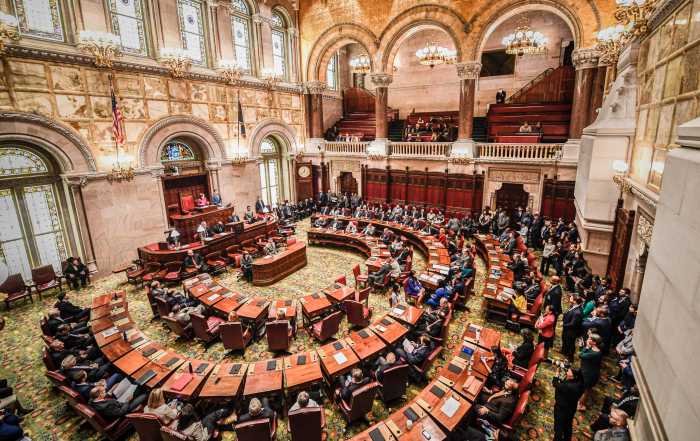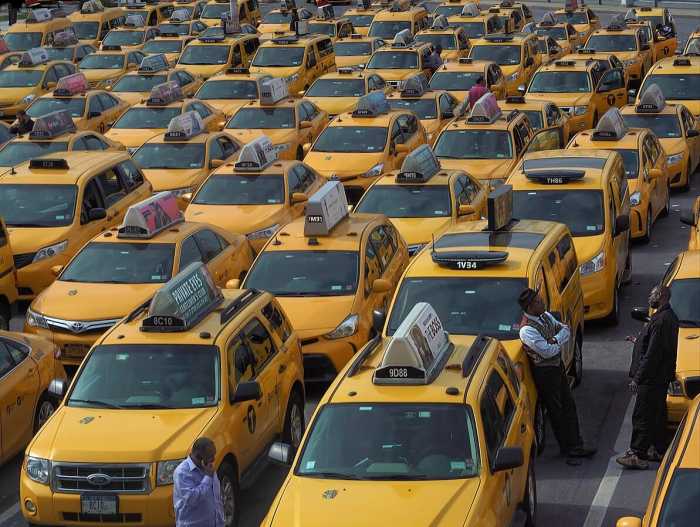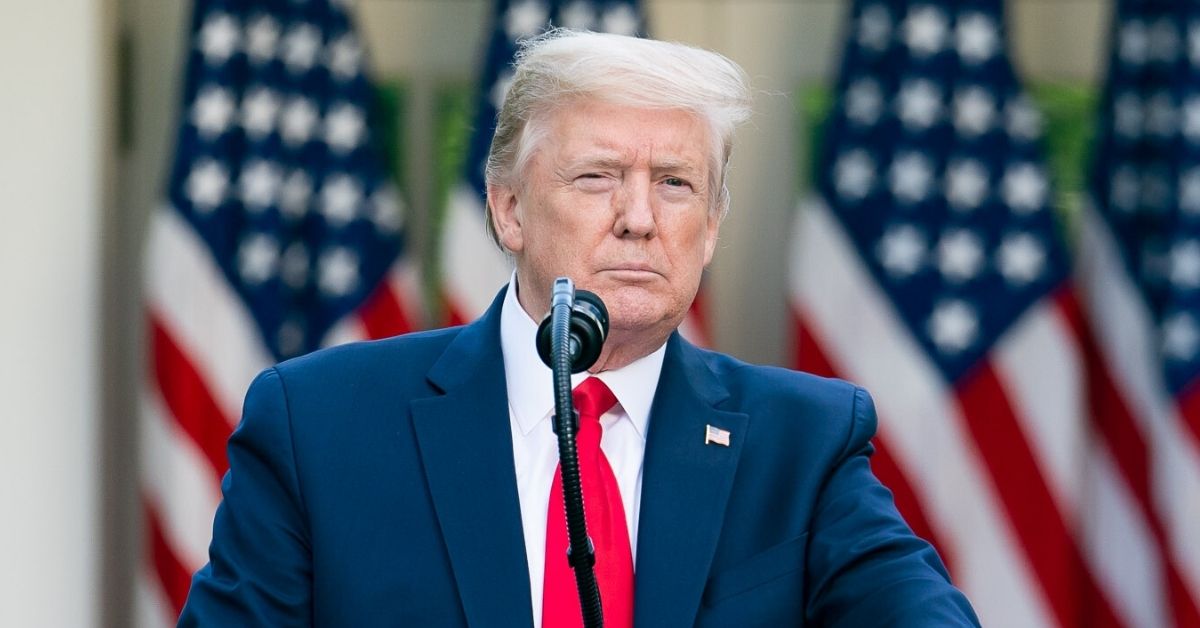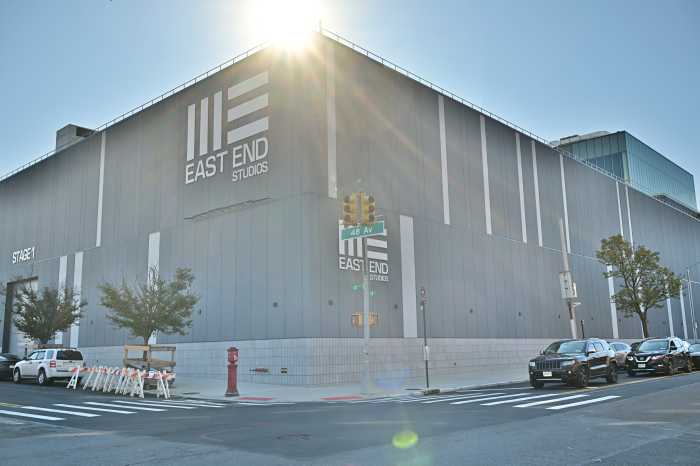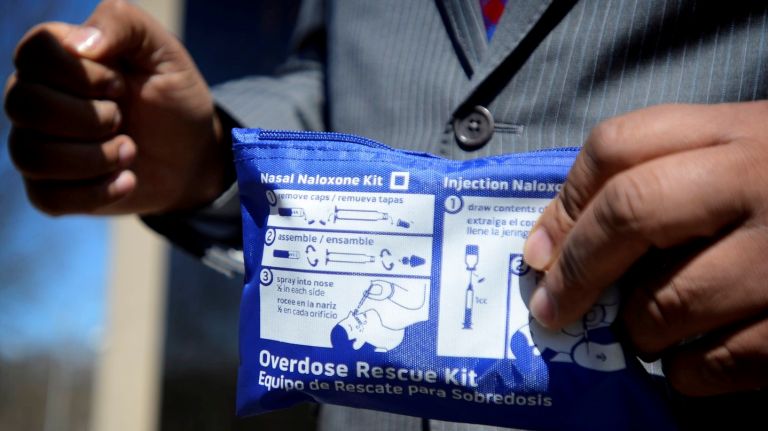
Last week, Dana Kurzer-Yashin taught a room of 25 people how to be lifesavers.
It only took an hour. There was no big demonstration. Kurzer-Yashin works for the social service group The Alliance for Positive Change, which used to combat AIDS and now has found additional scourges. She talked for a while and asked people to fill out paperwork and then she did the crucial part: she handed out the kits.
They were blue bags carrying nalaxone, which can be sprayed up someone’s nostrils to reverse the effects of an opioid overdose.
In 2016, New York City registered more than 1,300 overdoses, a record high driven by the powerful opioid fentanyl. Full numbers for 2017 are still forthcoming.
How do you stop an overdose?
The point of nalaxone trainings is that you can do a lot with a small book-size kit.
Kurzer-Yashin, a no-nonsense 22-year-old recent college grad and born-and-raised New Yorker, walked a group of employees from health insurer Amida Care through the paces.
Recognize the symptoms: non-responsiveness, shallow breathing, lips or nail beds turning blue. The “nod” in and out of consciousness that might be either a really good high or prelude to an overdose. Kurzer-Yashin encouraged her charges to wait and watch. “It’s the kind of thing as a New Yorker we see all the time,” she said.
If the person isn’t responding to “rescue breaths” or even a harsh rub of the sternum with your fist, take out the nasal injector. Put it up one of the person’s nostrils and spray the drug in.
The wonder-drug of nalaxone, also known by the brand name Narcan, has become more prominent in recent years as the country deals with an opioid crisis. Simplistically, opioids affect drug users’ breathing, potentially causing them to suffocate. Nalaxone “binds” to opioid receptors in a user’s brain, explained Kurzer-Yashin. That way the opioid can’t get in, pausing its effects, and the person can breathe again. She noted that there are no negative consequences for administering the drug to someone who’s not overdosing.
Despite working in a site on the Lower East Side where drug users can receive services such as needle exchanges, she has only personally administered nalaxone once: at the East Broadway F station.
She saw a person standing but slumped over, talking for a while but then no longer responding. Kurzer-Yashin said: “Hey I’m gonna Narcan you.” She got no response, so she did.
Perhaps it was the mention of personal experience — the acknowledgement that you might see an overdose anywhere during your day in the city — but this was the point in the training where questions erupted around the room. Workers for Amida Care, a not-for-profit health insurance plan whose members have chronic illnesses, are familiar with high-risk individuals. The office where the session took place is located in the 34th Street area, where drug use or its aftermath frequently happens on the street or in the 8th Avenue McDonald’s. The employees wanted to apply the kits and Kurzer-Yashin’s words to their daily lives. How long do you wait to see whether an overdose happens after someone takes drugs? (It can take hours, Kurzer-Yashin said.) What if people won’t help you with the overdoser? (Point at someone and ask for their help.) The questions continued, with some participants noting that people seemed to be in danger of overdosing often. How, one woman asked, can you save everyone?
Can ordinary people make a difference?
It’s a difficult question. If you don’t have the small blue kit, you can call 911 and say the person is not breathing and not conscious, notes Kurzer-Yashin. Meanwhile, breath into their mouth: pinch their nose and give two sharp breaths and then then another periodically. But not everyone can be a paramedic in their daily lives.
The number of fatal overdoses has prompted efforts from Mayor Bill de Blasio in both enforcement and social services, such as the $22 million in additional funding he announced on Staten Island last month to combat the opioid epidemic. That included a “Leave Behind” nalaxone program in which EMS workers would distribute 5,000 nalaxone kits a year to homes where they’ve responded to an overdose call.
The kits from the Alliance and similar nonprofits are paid for by the city as well. In 2017, the Alliance distributed 929 kits, resulting in a reported 145 overdose reversals. The total is likely higher as some reversals go unreported.
All of it is an attempt to stop the deaths, as waves of stronger and stronger opioids enter the market, and drug users misjudge or go too far. Perhaps some will be lucky enough to be near a good samaritan with a blue kit.



